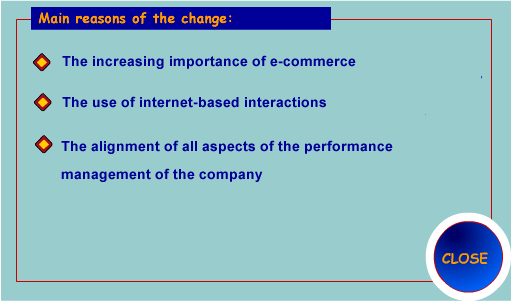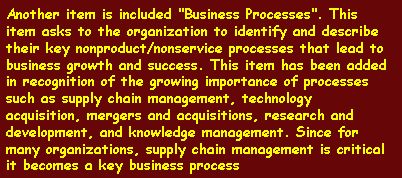







|
Malcolm Baldrige National Quality Award
|
||||
|
For a general overview of the content of each criteria, you may have a look at the link:
Updates of the Award The criteria are updated yearly with major overhauls occurring every two years. The last revision is dated from 2001. Actually the criteria continue to evolve, seeking to enhance coverage of strategy-driven performance, address the needs of all stakeholders, and accommodate important changes in business needs and practices.
In addition the Criteria emphasizes the roles of data, information, and information and knowledge management and their use in business. The Organizational profile, the criteria items and the scoring guidelines have been aligned so that the assessment addresses both changing business needs/directions and ongoing evaluation/improvement of key processes. Both are important because prioritized process improvement ("doing things better") and addressing changing needs ("doing the right business things") are critical to success in an increasingly competitive environment. In order to get more details about the main changes in each criteria, move cursor on the desired one on the following graph
The scoring guidelines have been modified to highlight the importance of addressing evaluation and improvement, as well as changing business needs
The percentage emphasis of Baldrige Award Criteria can be represented as follows:
Comparison with ISO 9000:2000 : The similarities between TQM and the Baldrige criteria are no accident: both depend upon the thinking of Edwards Deming.
But of course, ISO 9001:2000 and the Baldrige criteria have their differences:
Although the Baldrige criteria have had and continue to have a profound respect on the ISO 9001:2000 revision, the weaknesses of the current revision are, in essence, the strengths of the Baldrige criteria:
Copyright © 2009 by the METU. All rights reserved. |
||||
